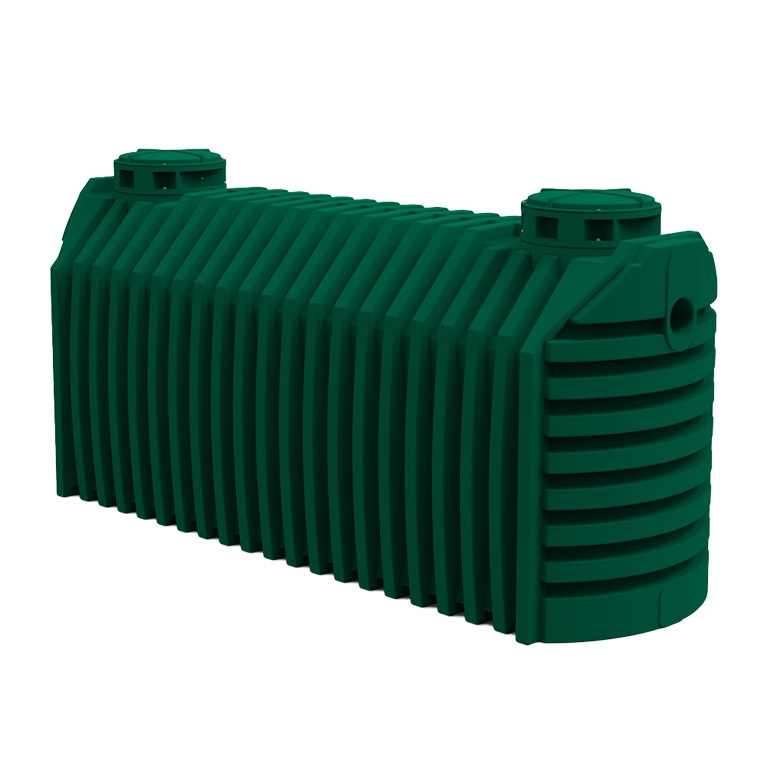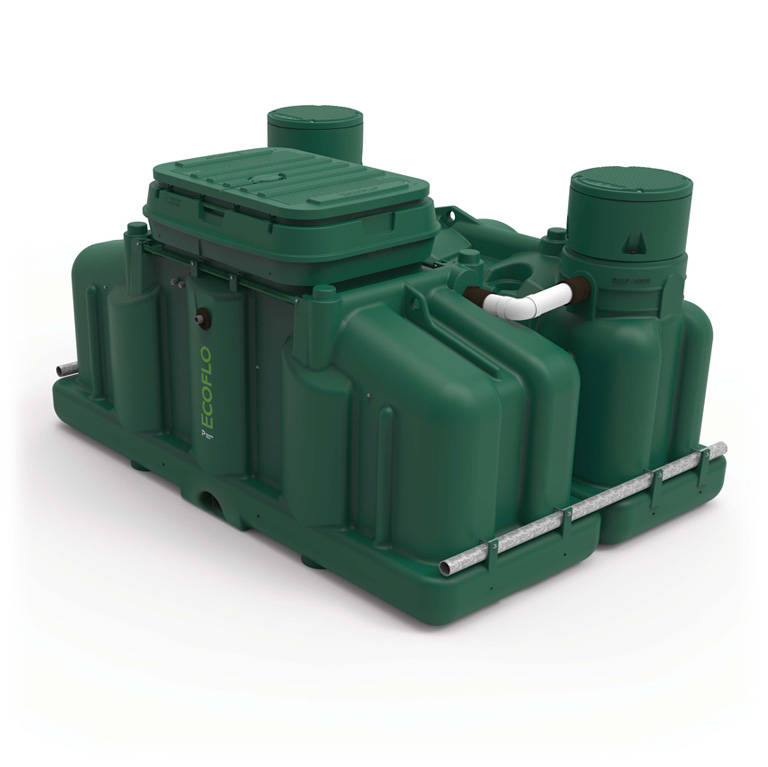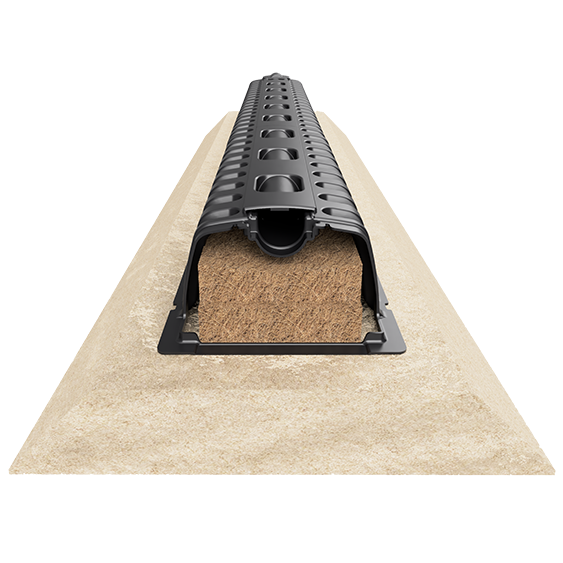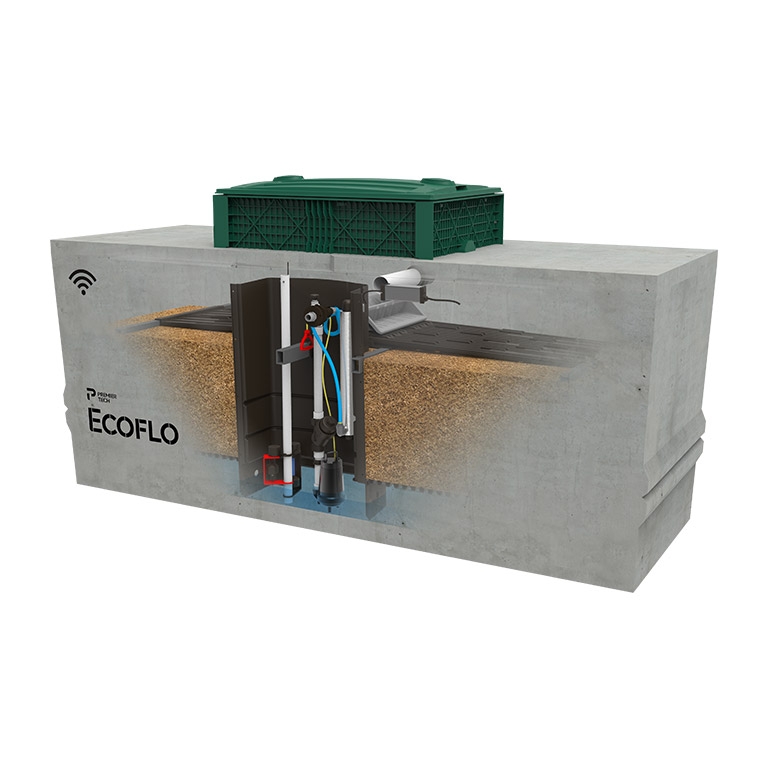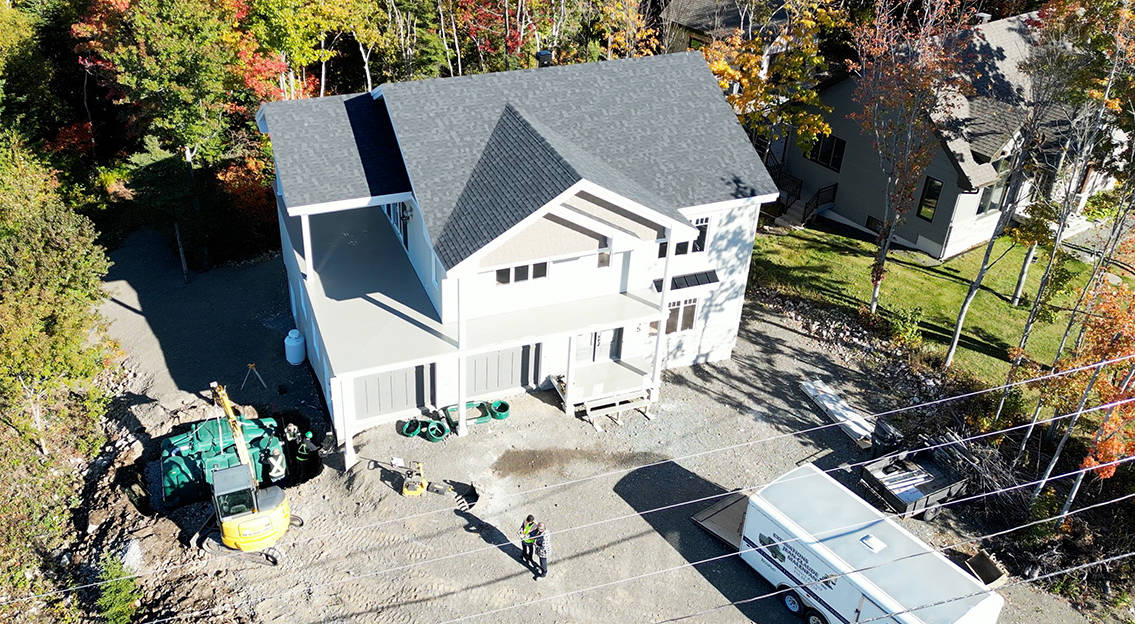What is a septic system and how does it work?
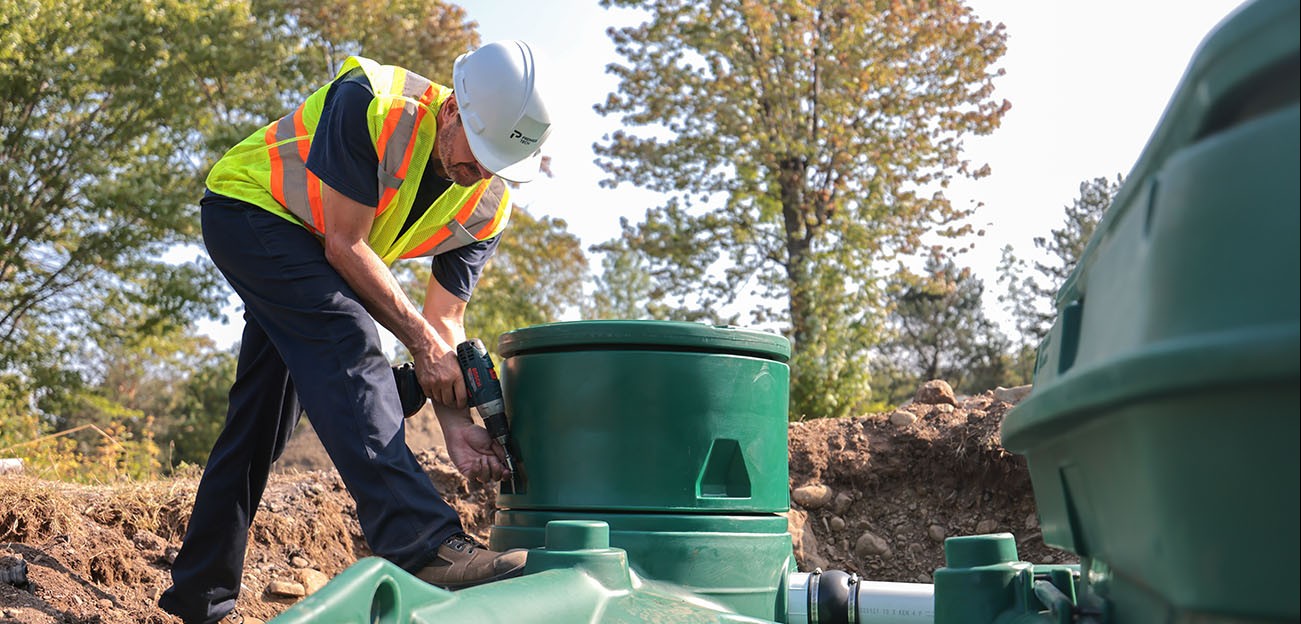
If you are a first-time septic system owner in 2025, you probably have questions about the installation in your yard.
The answers you need are here — in terms that are accessible and easy to understand.
Let's start at square one:
- Your septic system is a series of components that treat wastewater on site, most likely in a rural area that has no municipal sewer.
- Your septic system works by collecting wastewater from your home, retaining solid materials, removing wastewater pollutants, and returning treated effluent to your property’s soil or the surrounding environment.
- Across the United States, people use many different terms to describe septic systems. The most common are domestic wastewater system, individual sewage system, on-site sewage system, residential wastewater treatment system, and subsurface sewage disposal system.
Now that you have the basics under your belt, read on to discover how conventional and advanced septic systems work.
Table of contents
How does a septic system work?
There are two main types of residential septic systems: conventional and advanced. Although their operating principles are often similar, they have different functions and are used in different situations.
How a conventional septic system works
A conventional septic system works by collecting wastewater from your toilets and drains. It retains solids and scum in a septic tank and pipes liquids to your septic drain field. In your drain field, bacteria break down wastewater pollutants and treated effluent returns to your property’s soil and groundwater.
That is the high-level answer. For a fuller understanding of how a conventional septic system works, we can break the wastewater treatment process into 10 steps:
- Wastewater from your toilet (called blackwater) and your shower, bathtub, sink, washing machine, and dishwasher (called greywater) runs into a main drainage pipe that leads to your septic tank.
- Solid materials sink to the bottom of your septic tank and form sludge.
- Fats, oils, and greases float to the top of your septic tank and form scum.
- Anaerobic bacteria (bacteria that do not need oxygen) in your septic tank feed on organic wastewater pollutants.
- Liquids pass through an effluent filter near the outlet of your septic tank.
- Filtered liquids flow through a pipe that leads to your septic drain field.
- Perforated pipes in your drain field allow wastewater to seep into a layer of gravel.
- Aerobic bacteria (bacteria that need oxygen) break down contaminants as wastewater percolates through the layer of gravel and into your native soil.
- In your native soil, any remaining impurities are removed. These impurities may include harmful bacteria, parasites, viruses, and nutrients.
- Treated wastewater reaches groundwater, which eventually drains into nearby streams, rivers, and lakes.
How an advanced septic system works
An advanced septic system works by receiving wastewater from your septic tank and lowering concentrations of organic matter, suspended solids, pathogens, and, in some cases, nutrients like phosphorus or nitrogen. After treatment, the system discharges effluent downstream, where it eventually returns to your soil, a ditch, or a watercourse.
Advanced septic systems are most often used on properties with:
- limited or no space for a conventional septic drain field
- shallow soil that is unsuitable for wastewater percolation
- impermeable soil or bedrock that prevents treated wastewater from infiltrating into the ground
- sensitive environments that require extra wastewater treatment processes
- strict local environmental regulations
How conventional and advanced septic systems work differently
The biggest difference between conventional and advanced septic systems is where the bulk of treatment takes place. With conventional septic systems, most wastewater pollutants are removed in the septic drain field. With advanced septic systems, most pollutants are removed in the advanced unit before wastewater is returned to the environment.
What are the parts of a septic system?
To add depth to your understanding of how a septic system works, you may want to take a closer look at the functions of its individual parts.
A conventional septic system has four main parts: a pipe that carries wastewater from your home, a septic tank, a pipe that connects your septic tank to your drain field, and the drain field itself.
An advanced septic system often has a similar configuration, but it includes one or more treatment systems installed between your septic tank and the area where clean wastewater is dispersed.
The pipe from your house to your septic tank
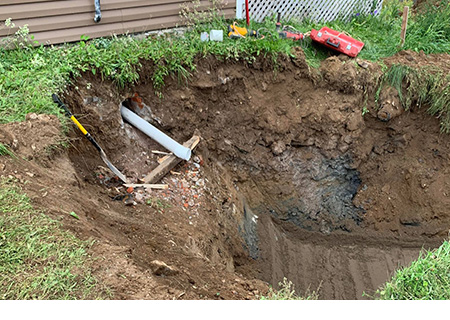
All the plumbing in your home connects to a main sewer line that slopes toward your septic tank. In most cases, the sewer line is constructed from a PVC (plastic) pipe that has a 4” diameter.
When you flush your toilet, take a shower, wash clothes, or do the dishes, wastewater enters the sewer line and flows into your septic tank.
Your septic tank
A septic tank is an underground and watertight container made of concrete, polyethylene, fiberglass, or steel. It provides primary wastewater treatment with the help of naturally occurring bacteria that break down solids and organic material. The tank then pipes partially clarified effluent downstream for further treatment or final dispersal.
Less common names for a septic tank include:
- home sewer tank
- sanitation tank
- septic pit
- septic reservoir
- septic vault
- sewage tank
How does a septic tank work?
A septic tank may seem complicated, but the way it works is actually quite simple. It holds wastewater long enough for it to separate into three layers:
- Top layer
Fats, oils, and greases float to the surface and form scum.
- Bottom layer
Solid particles settle on the bottom of the tank and form sludge. Helpful bacteria break down some of these solids and turn them into liquid waste.
- Middle layer
Liquid wastewater sits between the scum and sludge layers. It exits the tank through a pipe that leads to your septic drain field.
What is a septic tank inlet baffle?
A septic tank inlet baffle is a device that directs raw wastewater downward to the mid-level of your septic tank. This design keeps surface scum from clogging the inlet pipe. It also reduces wastewater agitation, which makes it easier for solids to settle on the bottom of the tank.
What is a baffle wall in a septic tank?
A septic tank baffle wall (sometimes called a partition wall or divider wall) separates compartments in your septic tank. The wall keeps most floating scum and settled solids in the first compartment. It also has an opening that allows liquid wastewater to flow to the next section of the tank.
The number of baffle walls depends on the number of compartments in your septic tank. Tanks with three compartments have two baffle walls. Tanks with two compartments have one baffle wall, and single-chamber tanks have no baffle wall at all.
What is a septic tank outlet baffle?
An outlet baffle is a device that directs wastewater from the mid-level of your septic tank to the pipe that leads to your drain field. This design keeps sludge and scum from leaving the tank, which prevents them from clogging your outlet pipe or drain field.
What is an effluent filter?
An effluent filter is a cylindrical device installed in the septic tank outlet baffle. It traps suspended solids (fine particles) that would otherwise clog your septic drain field. Because it protects a drain field so effectively, some jurisdictions require this type of filter to be installed in new septic tanks.
Effluent filters need to be regularly cleaned. The exact timing depends on the design of your septic tank and how much you use it. As a minimum, we recommend that you ask a septic professional to clean your filter every time they pump your tank.
What is a septic tank vent?

A septic tank vent allows gases to safely escape your septic tank.
Bacteria in your tank generate gases as they break down wastewater contaminants. The most common is hydrogen sulfide, which smells like rotten eggs. These gases must be released to prevent a build-up of pressure that could stop or reverse the flow of wastewater.
There are three main strategies for septic tank venting:
- Rooftop ventilation
Gases and odors are vented back through the plumbing in your home and released through a pipe in your roof.
- Septic tank ventilation
Gases are released through a vent in the lid of your septic tank. In many cases, this vent has a mushroom shape and can be fitted with a charcoal filter to reduce odors.
- Drain field ventilation
Gases pass through the septic tank and are released through a vent pipe in the drain field. This pipe is easy to spot on your property because it is often shaped like a periscope or a candy cane.
What is a septic tank access port?
An access port is a covered opening on top of your septic tank. Most tanks have two openings — one above the inlet baffle and one above the outlet baffle. They allow septic professionals to pump your tank and they provide easy access to important components, including the effluent filter.
What is a septic tank riser?
A septic tank riser is a shaft made from concrete, polyethylene, or fiberglass. When your septic tank’s access ports are below ground level, you can install a riser to bridge the gap and allow entry into your system. Otherwise, you would have to excavate the tank’s lids before every pump-out.
The septic tank outlet pipe
When raw wastewater enters your septic tank, an equal volume of liquid exits through an outlet pipe that leads to an advanced treatment system or your drain field. The outlet pipe is most often made with PVC (plastic) with a 4” diameter.
If your property has uneven terrain, such as slopes or embankments, then gravity alone may not be enough to move wastewater through the outlet pipe. Your septic system will need to include a pump station (often called a lift station) that pressurizes the flow of wastewater from your septic tank.
Your advanced treatment system (if required)
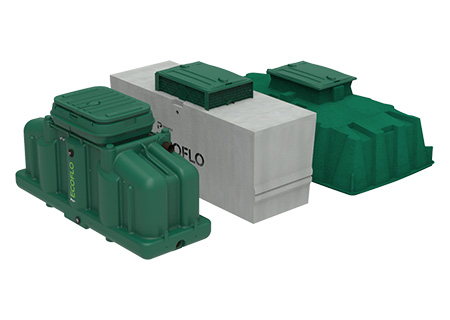
An advanced septic system (sometimes called an engineered septic system) is a secondary treatment unit that removes wastewater contaminants before discharging treated effluent to your drain field, a ditch, or a watercourse.
There is a wide range of advanced septic systems on the market, all with unique designs and components. Despite the differences, we can still break the most popular systems and their parts into two main categories:
- Media filters
Wastewater passes through a filter that traps and removes contaminants. Traditional filtering media include sand or synthetic materials like foam, fabric, or textile. Coconut husk fragments are the most sustainable choice, which is why we use them in our Ecoflo septic systems.
- Aerobic treatment units (ATUs)
Wastewater is aerated with an air compressor or blower. This step supports the growth of aerobic bacteria (bacteria that need oxygen) that digest suspended solids and other wastewater contaminants.
The advanced treatment system outlet pipe (if required)
If you have an advanced treatment system, it may be fitted with an outlet pipe that directs treated wastewater downstream for additional purification or final dispersal. The outlet pipe is usually made from PVC (plastic). The diameter of the pipe varies according to the configuration of your system and how it disperses treated wastewater.
If gravity alone cannot move wastewater through the outlet pipe, you will need a pump station that pressurizes the flow between your septic system components.
Your septic drain field
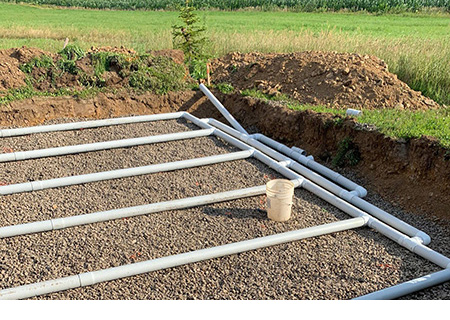
A septic drain field, also known as a leach field, is an underground network of perforated pipes that receives wastewater from your septic tank. Wastewater that trickles through the drain field undergoes a final treatment process that removes pollutants. Treated wastewater then returns to the groundwater below.
Other common terms for a septic drain field or leach field include:
- conventional septic bed
- dispersal bed
- disposal field
- seepage bed
- septic field
- soil absorption field
- traditional septic bed
- weeping bed
How does a septic drain field work?
A septic drain field accepts, treats, and disperses wastewater. After wastewater seeps through the perforated pipes in your drain field, it percolates through a bed of gravel and then into your native soil. Bacteria in these layers break down contaminants and, ultimately, clean wastewater is discharged into groundwater.
How deep is a septic drain field?
A septic drain field is usually 36” to 48” deep. In most installations, there is an 18” to 30” layer of backfill that sits on 2” of gravel. This gravel protects perforated pipes with a 4” diameter. Under these pipes is a 12” layer of more gravel.
How long is a septic drain field?
The length of septic drain field lines depends on local regulations and the requirements of your property. For large installations, a field’s perforated pipes may be up to 100’ long. In most cases, there is a gap of 6’ or more between each pipe.
Alternatives to a septic drain field
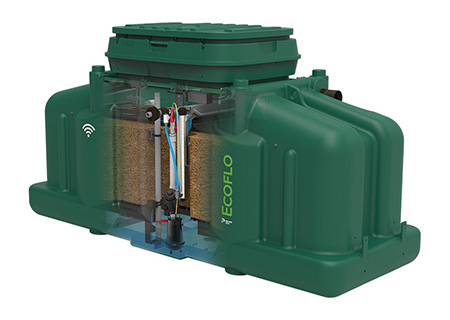
People often ask if it is possible to have a septic system without a drain field. The answer depends on the type of system you choose to install.
A conventional septic system requires a drain field to properly remove wastewater contaminants and return treated effluent to your soil and groundwater.
The problem is that some properties lack space for a conventional drain field, or their soils are unsuitable for wastewater treatment. If you find yourself in this situation, you may be able to install one or more advanced technologies that match or beat the treatment performance of a traditional system.
These advanced technologies may include:
- Ecoflo compact biofilter
The Ecoflo compact biofilter receives wastewater from your septic tank and removes wastewater pollutants with a sustainable coconut husk fragment filter. It then discharges effluent to a compact drain field. The result is an installation that takes up to 50% less space than traditional systems.
- Ecoflo compact biofilter with Rewatec UV disinfection
This treatment combination is ideal when there is no possibility of installing a drain field. Again, the Ecoflo compact biofilter receives wastewater from your septic tank and provides secondary wastewater treatment. Then, the ultraviolet (UV) disinfection system kills wastewater pathogens so that you can discharge effluent directly into a ditch or watercourse.
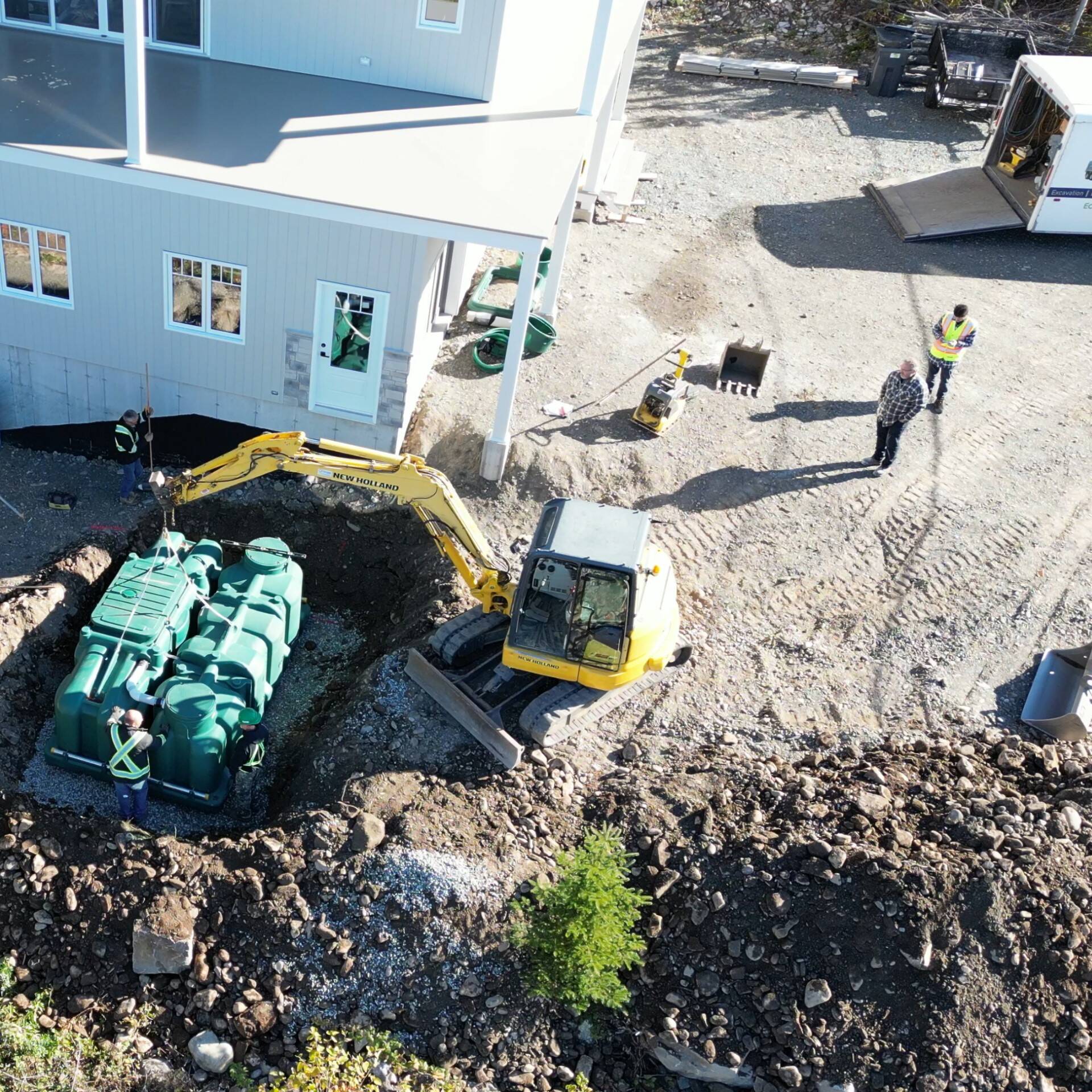
Reach out to our septic experts
Looking for a new septic system? Need your old one inspected? Or just not sure where to start?
We're here to help! Send us a few quick details and we'll give you free advice and recommendations based on your needs.
